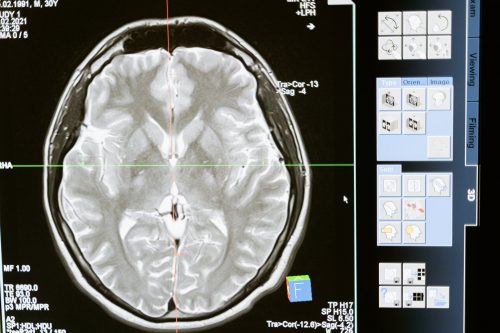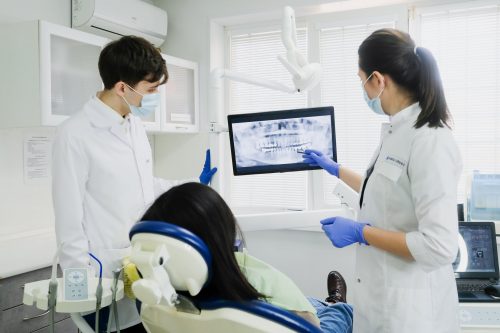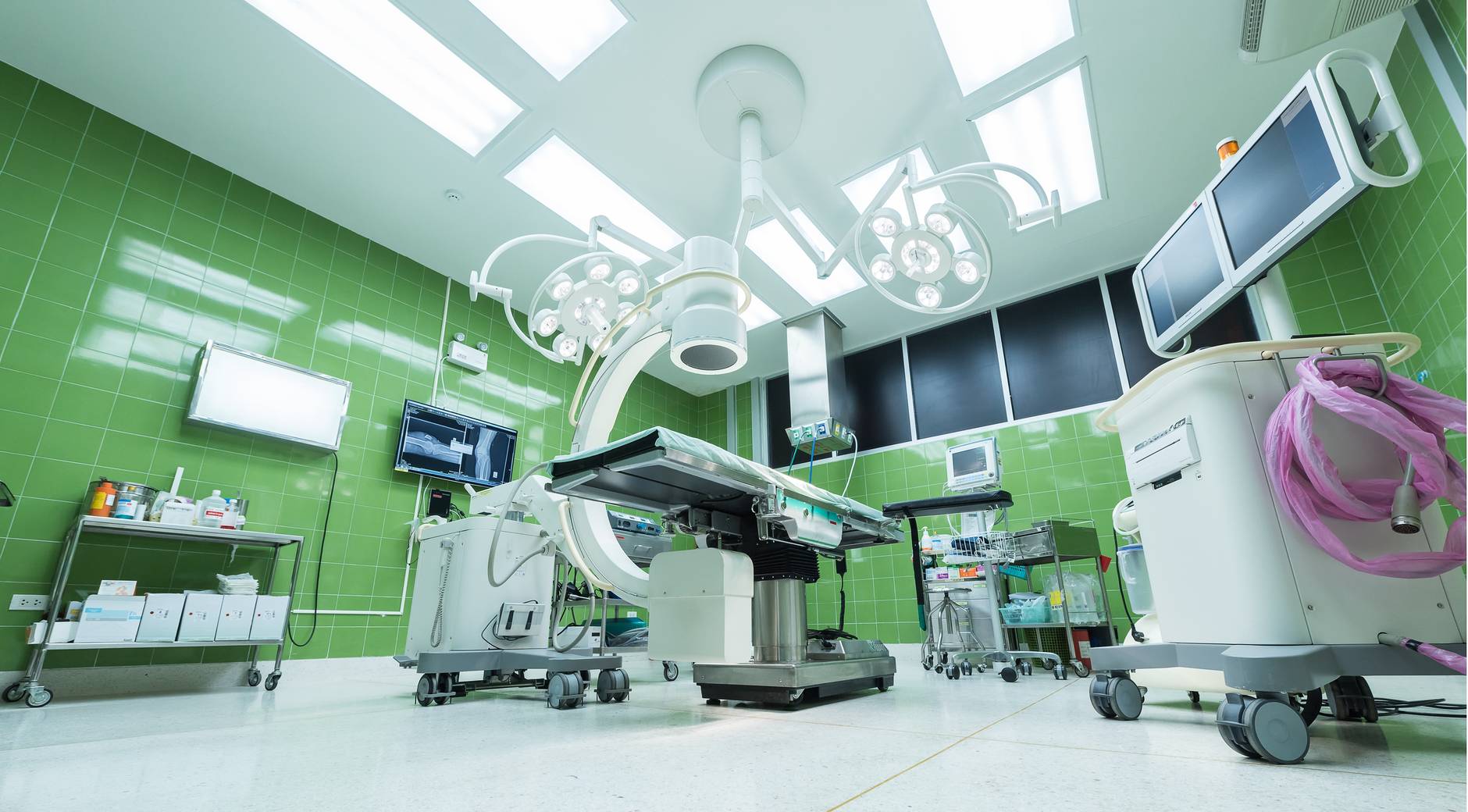The roles of Medical Radiography in patient care are often under-emphasized.
The task of patient care and the provision of quality medical assistance is one that is all-encompassing and all-embracing since the betterment of a patient’s health condition is the primary goal of any healthcare giver.
It demands the collaborative and synergistic efforts of all healthcare providers, namely: physicians, nurses, radiographers, physiotherapists, laboratory scientists, dietitians, social workers, and so on.
Each of these categories of professionals and health care service providers; though with specific responsibilities and roles, enjoy some degree of interconnectedness of function and goal.
This goal is to provide the needed healthcare service to their patients, and to all other persons who are desirous of such succor. Since Medical Radiographers fall in this vital league of the workforce in the health service, it is highly imperative to demystify their roles in achieving that all-important primary goal of patient care.
Furthermore, the members of the public and the elite may not be convincingly at home with the indispensable roles of medical radiographers in patient care for both public and private health institutions. This write-up may serve as a little. though very insightful one towards enlightenment of all about the profession and what it offers.
This article is purposed, therefore, to examine the Medical Radiography profession, its historical evolution, and antecedence in order to properly and adequately capture its roles in the diagnosis, management, treatment of diseases and ill-health as well as the overall patient care delivery.
Table of Contents
- DISCOVERY OF X-RAYS AND THE BIRTH OF THE MEDICAL RADIOGRAPHY
- ROLES OF MEDICAL RADIOGRAPHY IN PATIENT CARE AND SERVICE DELIVERY
- Conclusion:
DISCOVERY OF X-RAYS AND THE BIRTH OF THE MEDICAL RADIOGRAPHY

The birth of this great profession can be traced correctly to the discovery of X-rays on November 8, 1895, by Sir Wilhelm Conrad Roentgen; a German Physics professor. The discovery was an accidental one as is the case with most of the landmark discoveries made since the history of human civilization. Roentgen was investigating cathode rays from Crookes tube, wrapped in black cardboard 1.
The black cardboard serves to prevent interference from the visible light using a fluorescent screen painted with barium platinocyanide. He observed a faint fluorescence or glow about a meter away and when examined, he found out that some invisible rays were coming out from the tube.
These rays were found to penetrate books and papers on his desk. He named those rays emanating from the tube, X-rays as an indication of the unknown nature of the rays.
The Discovery of X-rays Proper
Furthermore, the photographic nature of the medical X-rays was proved when Roentgen imaged the hand of his wife on December 22, 1895, 1. From then on experiments on the newly discovered rays continued. It continues to evolve and has found application in the diagnosis, treatment of diseases, injuries, and even in industries and other areas of human endeavors.
It is very important to give a very concise explanation of how the X-rays used in the hospitals and radio-diagnostic centers are produced. This may serve to calm the inquisitiveness or douse the curiosity of all. Medical X-rays are produced by sophisticated equipment.
The X-ray machine consists of a tube housing that contains a tube insert with its contents. Within the tube, insert are such components that aid in the production and acceleration of the electrons which generate the X-rays.
Such components include an evacuated glass envelope, which provides the vacuum or air-proof atmosphere essential for the production to take place; a cathode assembly, and the anode assembly.
The process of X-ray production occurs when electrons are accelerated at a very high potential difference from the cathode (negative electrode) and are suddenly or abruptly stopped by a heavy metallic target called tungsten at the anode (positive electrode).
At this point, X-rays are emitted in addition to the liberation of an enormous amount of heat. The other physics of the synthesis of X-rays may be beyond the easy comprehension of a non-medical physicist or radiographer and so this explanation can suffice for that.
ROLES OF MEDICAL RADIOGRAPHY IN PATIENT CARE AND SERVICE DELIVERY
I believe that it is noteworthy to inform my readers that X-rays are not the only form of radiant energies and waveforms used in the diagnosis and treatment of disease entities and injuries. Although X-rays and other forms of ionizing radiation constitute a greater percentage of radiant energies in use, other non-ionizing forms exist and are applied too.
These include gamma rays, ultrasonic beams, infra-red beams, ultraviolet rays, radiofrequency pulses et cetera. The Ionising and non-ionizing nature of the radiation is used to describe how the radiation interacts with matter by producing ions or not respectively. This is the simplest understanding of the terms.
Who are Medical Radiographers?
A medical radiographer is a person professionally trained and qualified to apply forms of radiant energies and waveforms in order to promote health, treat diseases, and generate images of diagnostic value 2. He/she is a trained medical professional who diagnoses and treats using various imaging modalities.
In Medical Radiography and Imaging, imaging modalities refer to the different radiographic equipment used in the diagnosis of patients that produce ionizing or non-ionizing radiation.
These include the Conventional X-ray units, Computed Tomography (CT), Magnetic Resonance Imaging (MRI), Ultrasound imaging, Nuclear Medicine, Radionuclide imaging, Positron Emission Tomography (PET), fluoroscopic and angiographic units, radiotherapy equipment, and a host of others.
Moreover, in order to adequately appreciate the roles of radiographers in patient care and administration of medical assistance, those roles have been dichotomized into the diagnostic and therapeutic aspects. This is because there are broadly two classes of medical radiographers- Diagnostic and Therapeutic.
Also, Read; Studying Radiography in Nigeria, All You Need to Know.
List of the roles of medical radiographers in healthcare:
- Diagnostic Roles of Medical Radiography
- Clinical Roles of medical radiographers
- Health Education roles of medical radiographers
- Psychosocial Roles of Medical Radiography
- Therapeutic Roles of Medical Radiography
- Mediation Roles of Medical Radiographers
Diagnostic Roles of Medical Radiography

A diagnostic radiographer is one who uses various imaging modalities like conventional X-ray units, CT, MRI, Ultrasound imaging, fluoroscopic and angiographic units et cetera to produce high-quality images relevant to diagnosis.
A radiographer produces quality diagnostic images and radiographs to enable proper diagnosis of diseases and injuries to be made. This is one of the key roles of a radiographer. For instance, a patient with a fracture is sent for an X-ray examination. After the examination, a radiograph is generated which contains details indispensable to the management of the condition of the patient.
The radiographs provide such information as the actual point of fracture, the nature of the fracture-whether open or close, the type of fracture as well as the relationship between the fractured part and the surrounding soft tissues or organs. The doctor may suspect a fracture based on the remote clinical signs but the image produced by a radiographer either confirms or refutes the suspicion. Images are also produced when a patient complains of tightness of the chest or difficulty in breathing as the case may be.
The patient goes to the X-ray department where a chest X-ray is carried out and an image produced to facilitate the diagnosis of the actual clinical problem. This process of producing images is always the case with other relevant clinical indications and requests.
Clinical Roles
Radiographers provide a very important clinical link between the physicians and the patient by assisting in the management of patient conditions. The radiographer advises the doctor on the best possible step to take. For instance, an additional projection is necessary for the conspicuous demonstration of a disease entity or that a supplementary examination needs to be carried out in order to validate a particular finding.
It is unequivocal to say that a radiographer provides a compass necessary for the clinician to navigate a patient’s health condition in order to make a proper diagnosis and prognosis. One interesting thing about the healthcare system is the existence of team spirit and cooperation. Each must understand and appreciate the limitations of the function of one, and then allow the other to bridge the gap.
Health Education
Furthermore, a radiographer sensitizes or educates the healthcare facility and the public about radiation-the uses, risks of undue exposure, radiation protection guidelines, and other practices. He/she is the chief custodian of the peoples’ radiation safety. Awareness of the dangers of the most insignificant exposure to radiation is very important.
As a trained professional lettered in the dispensing of radiation and other radiant energies, he is duty-bound to educate the public on the general conduct in radiation zones like in the X-ray departments to avoid radiation accidents or occupational hazards due to radiation exposure. A radiographer cooperates with the health organization to provide radiation warning lights and indicators to avert inadvertent exposure of the patient and other workers.
Also, Read; Telehealth In Nigeria: Integrating Telecommunication in Healthcare
Psychosocial Roles of Medical Radiography
Moreover, one of the ways of promoting patient wellbeing and assuaging pains is through giving psychological and physical support where necessary. From what is learned and experienced, one of the ways of achieving speedy treatment of the physical injuries and pains of patients is by recognizing and understanding the psychological needs at that point.
A radiographer understands that fact perfectly and applies that not only to attract the cooperation of the patient during some sensitive radiographic investigations like Hysterosalpingography (HSG) Intravenous urography (IVU), obstetric scans, etc, as well as in special patients like patients in stretchers and wheelchairs, those on life support apparatuses; but also to lighten the condition of the patient even when the condition is extremely distressful and horrible.
The reassuring words, beautiful smiles, and listening ear all go a long way in ensuring the patient gets the best of care, concern, and attention.
Therapeutic Roles of Medical Radiography

A therapeutic radiographer is trained to treat cancers and other tumors (abnormal outgrowths from the body) using ionizing radiation beams produced by extremely high voltage radiotherapy equipment.
A therapy radiographer is an allied health practitioner who has undergone specific training and uses radiotherapy to treat cancers 3. It follows that this class of radiographers works most of the time in the oncology or cancer treatment centers in hospitals.
However, he/she has virtually the same roles as a diagnostic radiographer like providing psychological assistance to patients. Psychological support is very important as the patients that present to the oncology departments are very peculiar ones. Most of the conditions promise very slim chances of survival, the patients themselves are passing through excruciating pains occasioned by their conditions.
The radiographer reassures these patients and psychologically palliates their sufferings. He is empathetic and compassionate and so understands where the shoe pinches.
Roles of Medical Radiographers: Treatment of Cancer
Furthermore, a therapy radiographer treats cancers by administering the correct doses of ionizing radiation beams to kill the cancers and prevent further proliferation; bearing in mind the important radiation protection principle of justification. Justification implies that radiation should be applied only when the benefits outweigh the risks.
He determines which radiotherapy technique is most effective in treating a particular type of cancer. With the knowledge of oncology, he selects the best available equipment and with proper treatment planning administers correct and sufficient doses to annihilate the cancerous growths.
Mediation Roles of Medical Radiographers
Also, just like in the diagnostic setting, the therapeutic radiographer provides a vital nexus between the managing clinicians and the patient. For instance, in a patient who presents with ovarian cancer, the radiographer plays a mediatory role in the management of the condition.
This is because he monitors the progression of cancer, suggests methods of improving the possibilities of killing the cancers while sparing normal tissues, provides vital follow-up images, and so on. This smoothens and potentiates the work of the clinician or oncologist who now takes the final but important decisions while taking into cognizance the available information provided by the radiographer. This decision ultimately affects the quality of care and attention given to the patient.
Roles of Medical Radiographers in the Surgery Rooms
In addition, radiographers also cooperate with doctors and surgeons in the theatres. During surgery, radiographic examinations may be required to confirm a clinical finding or to localize lesions prior to surgical excision. Post-surgical or post-operative images are also taken by radiographers after some time to ascertain the extent of healing.
Furthermore, patients who cannot be wheeled into the X-ray department for their routine or prescribed investigations are imaged in their wards. Radiographers use mobile X-ray units to carry out the examination. Ward radiography is very essential, especially in patients whose traumatic or pathologic incapacitation inhibits movement from one point to another.
Also, Read 7 Innovative Approaches to Healthcare that Could Be Adopted in Nigeria.
Conclusion:
Having explored the roles of radiographers in the administration of patient care and quality medical assistance, although these roles are inexhaustible; it is now very crystal clear to the readers that this group of professionals is indispensable in the health care system.
The doctors and other healthcare givers should understand and appreciate this fact. Since the well-being of the patient forms the fulcrum of our professional services, it is only great that each respects and supports one another.
Radiographers have given the world easy access to the happenings in the ‘internal environment ‘using their trained eyes to point out even the smallest of clinical details. With their skills and expertise, diagnosis of hitherto difficult conditions has become less difficult and accessible through the production of images of diagnostic cum therapeutic relevance.
However, a myriad of challenges confronts the medical radiography profession, especially in Nigeria like poor funding of the hospitals which has resulted in the paucity of equipment and machines necessary for the radiographers to do their works very well.
Anyway, that should be a topic for another day. It is my strong belief that this profession holds enormous and limitless prospects if the various potentials are harnessed and the requisite support given to properly fan into flames those potentials. Radiography is a noble profession and therefore ennobles not only the practitioners but the entire healthcare system and the society at large.
REFERENCES
1. Wikipedia: The Free Encyclopaedia [Internet]. San Francisco USA: Wikimedia Foundation Inc: 2020. History of X-rays: updated on 2020 October 5; retrieved on: 2020, October 9. Available from: http://www.en.m.wikipedia.org/wiki/X-ray#:text=An%
2 Joseph DZ, Ugochukwu-Ogbonna IT, Ibrahim ZF, Hopa RE, Ameh PO, Dauda M, U et al. Effective Primary Health Care in Nigeria: The Role of Radiography and Medical Imaging. Nigerian Journal of Medical Imaging and Radiation Therapy. 2020; 9(3): 9-16.
3 NHS Christie Foundations [Internet]. The Christie NHS Foundation Trust Wilmslow Road: 2020. Who is a therapeutic radiographer? Accessed: 2020 October 4. Available from: http://www.christie.nhs.uk.Therapy-radiographer.
Other Posts You May Like



